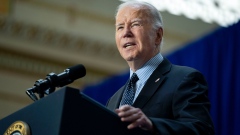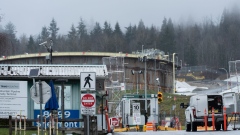May 27, 2022
International flight delays at Pearson airport jump by factor of 275
, The Canadian Press
Airline stocks rally as they see path to profit despite fuel jump
The number of international flights delayed on arrival at Toronto Pearson International Airport jumped by 275 times last month compared with April 2019.
The Greater Toronto Airports Authority says it held 2,204 planes from abroad on the tarmac last April versus just eight in the same period before the COVID-19 pandemic.
Staffing shortages at security and customs checkpoints along with public-health protocols have seen airport wait times soar as travellers flood the skies after two years of pent-up demand.
In the past month, tarmac delays have frequently led to staggered offloading of passengers from a given plane on arrival to ease the burden on overflowing terminals. Meanwhile departing passengers can find themselves waiting hours to get to their gate, with scenes of long security queues and stories of missed flights on social media.
In the second week of May alone, some 18,000 arriving international passengers at Pearson were held on board longer than 30 minutes, and 3,000 longer than 75 minutes.
"We require the government to implement solutions as the summer season has a forecast increase of almost 50 per cent in international passengers," authority spokesman Ryan White said in an email.
"Without government intervention to reduce screening and border processing times, passengers would be facing even further congestion and lengthier holds onboard planes -- a situation which is already untenable."
The authority, which operates the country's largest airport, is calling on the federal government to scrap public-health requirements such as random testing upon arrival and to invest in staffing and technology to improve passenger clearance times.
Transport Minister Omar Alghabra has said Canada's airport security agency is working to boost staffing levels.
He said earlier this month that other culprits for choked checkpoints include out-of-practice travellers and more last-minute bookings by passengers still leery of abrupt public health measures, which throws a wrench into staff scheduling.
However, the head of the Canadian Airports Council says staff levels are the No. 1 obstacle to airport bottlenecks.
"The challenge here -- the main piece -- is labour, and being able to staff those peaks and being nimble enough to make it work," Monette Pasher said earlier this month.
Domestic airline seat capacity for May was projected at 85 per cent of 2019 levels, according to council forecasts, and 78 per cent for domestic, U.S. and international overall. The council predicts the latter figure will hit 90 per cent in July.
Several airports and the Canadian Air Transport Security Authority have encouraged passengers to arrive well in advance of departure, with Vancouver International Airport advising them to show up three hours beforehand.








